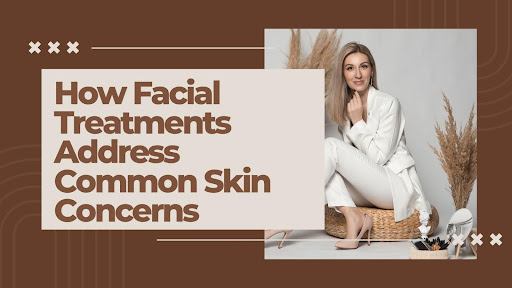In the pursuit of flawless skin, many individuals grapple with various skin concerns, from acne breakouts to signs of aging. Fortunately, facial treatments offer a diverse array of solutions tailored to address these common issues. In this comprehensive guide, we delve into how facial treatments effectively target concerns such as acne, uneven skin tone, wrinkles, and more, providing insights into the mechanisms behind these treatments and their benefits.
Understanding Acne
Acne, characterized by clogged pores, inflammation, and often, bacterial infection, is a prevalent skin concern affecting individuals of all ages. Facial treatments designed for acne typically aim to unclog pores, reduce inflammation, and control excess oil production. Popular options include chemical peels, microdermabrasion, and specialized facials containing ingredients like salicylic acid or benzoyl peroxide. These treatments work by exfoliating the skin, killing acne-causing bacteria, and regulating sebum production, resulting in clearer, smoother skin over time.
Combatting Uneven Skin Tone
Uneven skin tone, characterized by dark spots, hyperpigmentation, or redness, can be a source of frustration for many individuals. Fortunately, facial treatments offer effective solutions to address these concerns and restore a more balanced complexion. These treatments often incorporate ingredients known for their skin-brightening properties, such as vitamin C and retinoids. Vitamin C inhibits melanin production and reduces pigmentation, while retinoids accelerate cell turnover, fading dark spots and promoting collagen production.
Hydroquinone is another ingredient used in some treatments to lighten dark spots by blocking melanin production. However, it should be used cautiously under professional supervision to avoid potential side effects. Advanced procedures like laser therapy and IPL (Intense Pulsed Light) can also target stubborn pigmentation, breaking down melanin pigments in the skin to reveal a clearer complexion over time.
Addressing Signs of Aging
As we age, our skin undergoes various changes, including the development of fine lines, wrinkles, and a loss of firmness. Facial treatments tailored for anti-aging purposes aim to counteract these effects by stimulating collagen and elastin production, restoring skin elasticity, and reducing the appearance of wrinkles.
Micro-needling, also known as collagen induction therapy, is a popular option for addressing signs of aging. This minimally invasive procedure involves the use of fine needles to create controlled micro-injuries in the skin, triggering the body’s natural healing response and stimulating collagen production. Over time, this leads to smoother, firmer skin and a reduction in the appearance of wrinkles and fine lines.
Another effective anti-aging treatment option is dermal fillers, which are particularly useful for targeting deeper wrinkles and restoring lost volume in the face. These injectable gels, typically made from hyaluronic acid or collagen, are strategically placed beneath the skin to plump up wrinkles and add volume to areas that have lost elasticity. The result is a smoother, more youthful appearance that can last for several months to a year, depending on the type of filler used.
Hydrating and Nourishing Dry Skin
Dry skin, characterized by tightness, flakiness, and dullness, requires extra hydration and nourishment to restore its moisture balance. Facial treatments designed for dry skin often incorporate hydrating ingredients like hyaluronic acid, ceramides, and botanical oils to replenish moisture and strengthen the skin barrier. These treatments include hydrating facials and oxygen therapy, which deliver intense hydration and vital nutrients to the skin, promoting optimal moisture levels and improving overall texture and radiance.
In addition to professional treatments, a consistent skincare routine tailored to dry skin can further enhance hydration and nourishment. This routine may involve using gentle cleansers, alcohol-free toners, and rich moisturizers formulated with hydrating ingredients to replenish moisture and fortify the skin barrier. Regular exfoliation with mild chemical exfoliants like alpha hydroxy acids (AHAs) or beta hydroxy acids (BHAs) can also help remove dead skin cells, allowing for better absorption of hydrating products and revealing smoother, more luminous skin. By incorporating these practices, individuals with dry skin can effectively combat dryness and achieve a soft, supple complexion that radiates health and vitality.
Minimizing Pore Size and Refining Texture
Enlarged pores and rough skin texture are common concerns that can affect the overall appearance of the skin. Facial treatments aimed at pore refinement typically involve exfoliation, deep cleansing, and pore-tightening ingredients like niacinamide or alpha hydroxy acids (AHAs). Treatments such as microdermabrasion, chemical peels, and laser resurfacing can effectively minimize pore size, smooth skin texture, and promote a more refined complexion, giving the skin a smoother, more polished appearance.
Conclusion
From acne breakouts to signs of aging, facial treatments offer targeted solutions to address a wide range of common skin concerns. Whether you’re battling blemishes, seeking to even out your skin tone, or combatting visible signs of aging, there’s a facial treatment tailored to meet your specific needs. By understanding the mechanisms behind these treatments and their benefits, you can make informed decisions to achieve your skincare goals and maintain a healthy, radiant complexion for years to come.



